The MSG Help Commands are a series of MSG editing commands available via user commands in the built in Help browser. Working with the MSG Editing Commands allows you to access the complete set of MSG evolution editing functionality, some of which is not directly accessible when just working with the MSG Advanced Editor. Studio Artist help includes active user commands indicated by an arrow icon. You press the arrow icon to run the associated user command.
If you are familiar with the old MSG Evolver editing application, all of the old configuration menu and evolution menu commands are available as Help user commands in Studio Artist 4. You can think of the help user commands as an alternative to adding menu commands directly to the Studio Artist application. There are hundreds of different MSG configuration macro edit commands, so adding them all as menu commands leads to a large number of unwieldy menus. By incorporating them in help browser documents we can also include ancillary text detailing what the various commands go.
At the time of this post, you can get to the MSG Editing Commands by going to the home page for the built in Help browser (press the Home button in the toolbar at the top of the Help browser). Then press the MSG Editing Commands link. The help page that come sup lets you access Evolve Commands or MSG Configuration macro edit commands. Press the Evolve Commands link. A help page called Commands to Edit the MSG Evolve Grid comes up.
There are a large number of MSG Editing commands on this help page. They can be used to do all kinds of different evolution or editing operations on the MSG preview grid in the MSG Evolution Editor. Some of the commands execute a single evolution or mutation operation on the preview grid. Others will run continuous evolution until you press the space bar to stop the command execution.
The buttons provided in the toolbar at the top of the Evolution Editor allow you to access some (but not all) of the MSG Evolution functionality available in Studio Artist 4. To get at all of the potential MSG editing commands you could run you need to work with the MSG Editing Commands in the Help browser.
The screen shots in the gallery at the top show the various help pages and associated links you will bring up to get to the MSG Editing Commands. The last image in the gallery shows the Evolution Editor running the Randomize (Evolve Continuous Command) editing command. When I pressed this editing command the preview cells in the Evolution Editor update with new randomized MSG presets every few seconds. This cycle of generating new sets of mutated preview cells will continue indefinitely until I press the spacebar to stop it.
MSG Configuration Commands
The MSG Configuration commands allow you to perform MSG macro edits. Macro Edits are multi-step editing operations executed at the touch of a command link.
Some macro edits will automatically build various MSG effects by internally constructing different MSG processor configurations at the press of a command link. Others will add various pre-built effect configurations to the end of a MSG preset’s internal processor chain. For example, you could press a configuration edit command to add a 3D lighting effect to an existing set of MSG presets in the Evolution Editor (or the current MSG preset in the Advanced Editor).
The first screen snap below shows the beginning of the Meta Edit options for the MSG Configuraiton commands. There are a large number of different meta edit commands available. Some can do things like convert a black and white MSG effect into a color effect. Others add various kinds of special effects to the existing processor chain.
Running one of these commands is like manually adding a series of one or more MSG processors from the MSG Source Library to the MSG Processor Chain Editor. If you were doing this manually you’d also have to edit the various IO connections to appropriately hook up the new processors’s IO ports to the appropriate image streams. For some macro edits, you might have to add additional image stream buffers to the Bus if you made the edit manually. Macro edit commands do all of this for you automatically at the push of a single command link.
The second image in the gallery above shows some of the MSG Configuration commands for generating abstract imagery. Again, there are a large number that can automatically generate various Color Turbulence, Color Gradient Patter, GrayScale Chaos and Chaotic Attractors, and Cellular Texturing patterns.

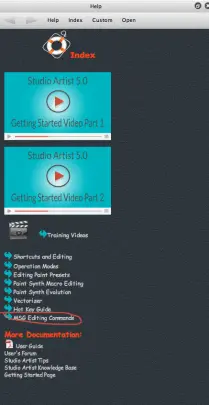
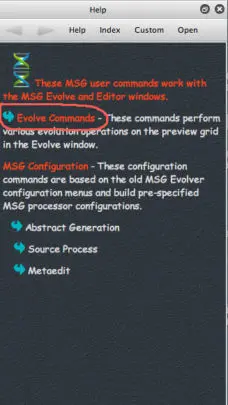
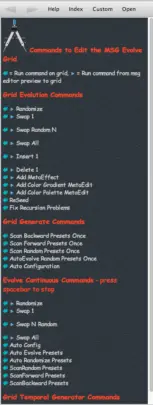
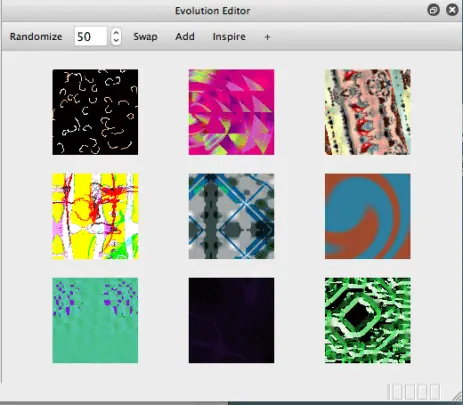
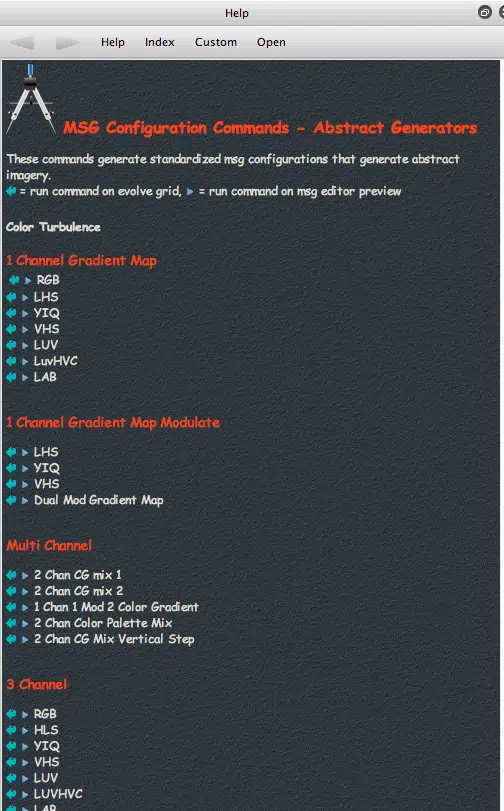






Would you do John a recap on how to simulate art mapper and tiling from Evolver on Studio Artist 4.03 thanks
I can do a few posts here that show how to emulate Evolver art mapping and tiling. There are some MSG processors that emulate the old timing functionality ( 1C_Tile, 3C_Tile ). Emulating art mapping involves building paint synthesizer presets that use path start regionization along with MSG BRush Loading. There is a tip on emulating MSG Evolver Art Mapper effects available at:https://synthetik.com/tips/wordpress/2009/05/simulating-the-msg-evolver-ar…
It would be cool to to do some post on that.In evolver I was using in “Arrangement” the ” Adaptive Block 1 Overlap test” is there a way i could recreate that effect ?Also the sessions safe from Evolver…are they compatible with SA 4.0thanks
Duplicating the Evolver Art Mapper overlap arrangement options might be difficult. There’s not really a direct analog to those available as path start regionize options. I’ll think about it. Maybe there’s a way to pull it together in the paint synthesizer?We’ve talked about dropping an updated Art Mapper op mode into Studio Artist. That probably won’t happen until version 5 if it does. I’m assuming you would vote yes for that feature addition.
Yes indeed i would vote for that one.SA4 crash when i try to apply MSG to large canvas ! Anything i shall do.: Running 10.6.4 on a 16G 3.33 6 core Intel xeon
Evolver sessions are not compatible with Studio Artist 4. But individual MSG presets generated by Evolver are compatible with Studio Artist 4.Some MSG presets can potentially use up large amounts of memory as the canvas size starts to increase. The individual image stream buffers are 2 bytes per pixel, and Float stream buffers are 4 bytes per pixel, and all image streams are allocated at the full canvas size. One thing to be aware of if you are working with large canvas sizes is to make sure you are using the Disk Undo Store preference option. Undo memory can use huge amounts of memory with large canvas sizes, so you want it to spool to disk rather than be stored in ram.Studio Artist is currently limited to 4 GB of virtual memory allocation by the mac osx operating system. Our current Quicktime api usage prevents us from currently moving to a 64 bit build since some of the Quicktime api calls we use are only available in 32bit. When we do move to a 64 bit app build at some point in the future, that will eliminate the current virtual memory limitations.